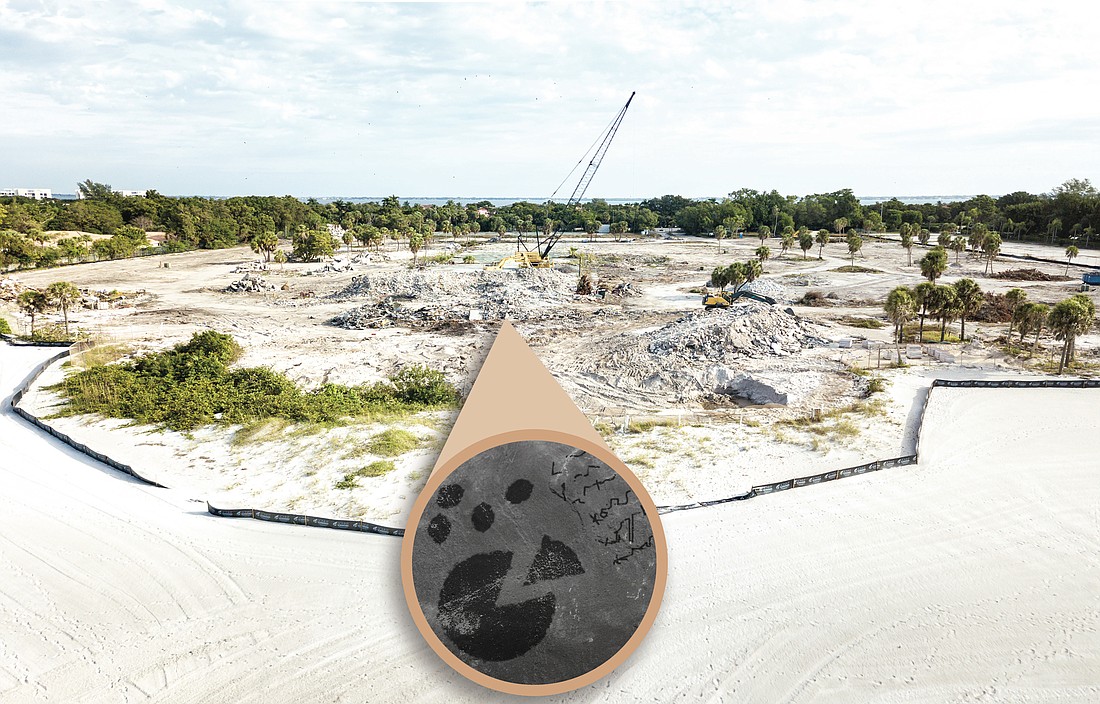- April 16, 2024
-
-
Loading

Loading

APRIL FOOL -- Astounding evidence of Longboat Key’s first inhabitants and how they lived more than 10,000 years ago is under study at the University of Florida and other sites following excavations in 2020 at the site of what will one day be the Residences at the St. Regis Longboat Key Resort, scientists said in a news conference on Tuesday.
Stone tablets with pictograph-style markings, the use of a primitive and recently deciphered written language, tools fashioned from bone and sinew for a variety of uses and even the New World’s first recorded recipe were uncovered at 1620 Gulf of Mexico Drive as engineers took soil core samples in preparation for the $100 million construction project.
“The paleo-indian period is a fascinating time in the history of the planet and the Longboat Key chapter is no exception,’’ said Dr. Ohio Jones, an archeologist with the University of Florida’s Ice Age project, which focuses on the state’s earliest inhabitants. “Not cavemen, but not modern man, either. We see wide variations along the coast in terms of development and social organization, but this sort of community was something we’ve never seen before.’’
Much of what was found has been attributed to a small group of individuals that scientists interpreted as “The Obsarvaires,’’ apparently scribes of sorts for the band of people who lived largely in a 16-acre area bounded by the Gulf of Mexico and an upland area.
Discoveries were made in early 2020 and initially kept quiet during the COVID-19 pandemic to keep crowds from forming. Scientists dressed as construction engineers or wayward tourists in Hawaiian-print shirts scoured the site, often with common beach shovels and pails, removing 876 artifacts.
Initially, core sampling turned up a tablet with a pictograph depicting some kind of recreational activity similar to tennis.
Ground-penetrating radar was used to pinpoint the locations of other suspected artifacts, as little as 10 feet below the surface, but up to 80 feet deep, Jones said.
“We’re confident we found everything of significance,’’ he said of tantalizing clues to the lifestyle of what scientists have called “Colony Man.’’
Among the team’s findings:
Study of the so-called Colony Man discoveries will go on for years, Jones said. He said he found it remarkable that carbon dating matched all the artifacts to perhaps a 100 year time frame, though precise timekeeping can not be ascertained, though no other civilization landed there to live permanently until the 1950s.
He said he also found remarkable the detail and breadth of the scribes' work, owing the scientific advancement to their work.
“Clearly, there were more than one scribes or Obsarvaires over the era,’’ Jones said, adding there was evidence other scribes tried to write about broader areas, though no evidence of their work survived. “Some stayed on longer than others.’’